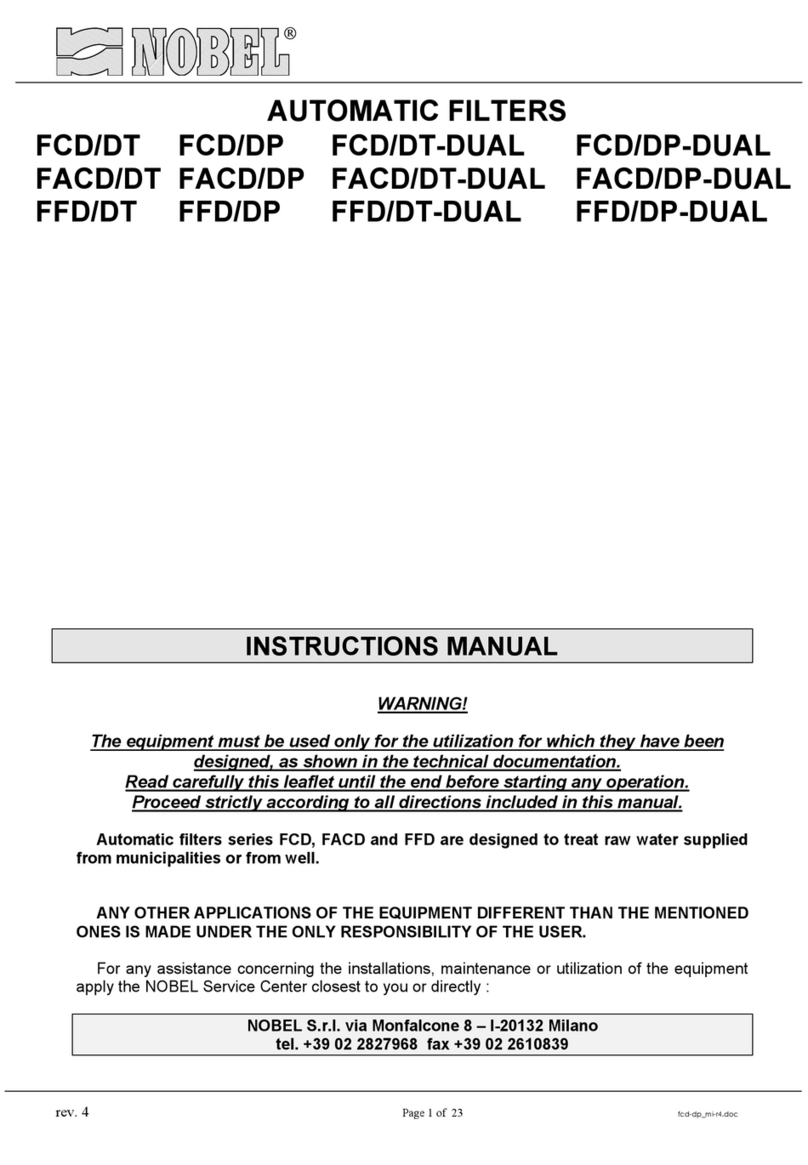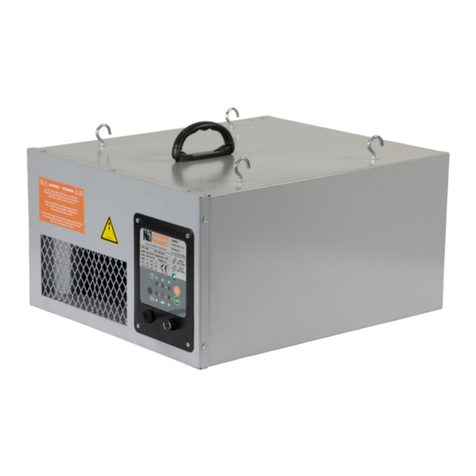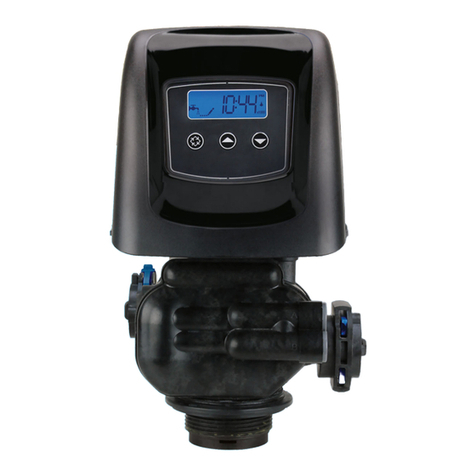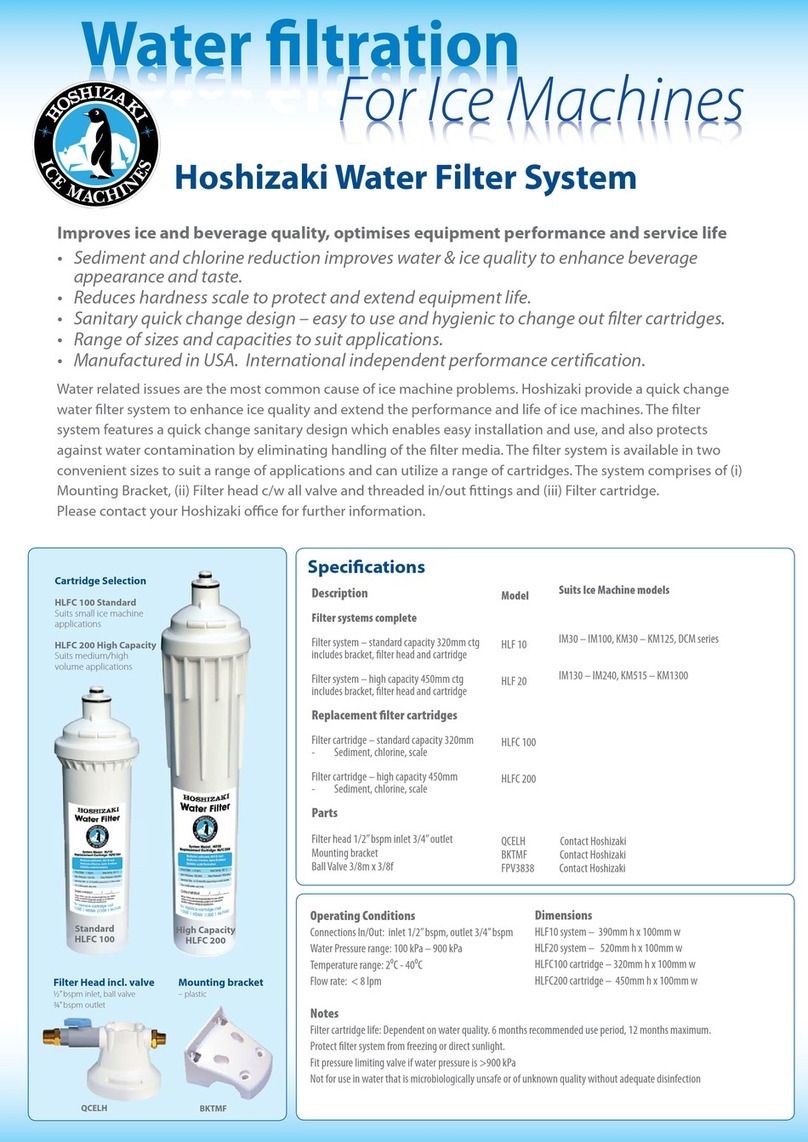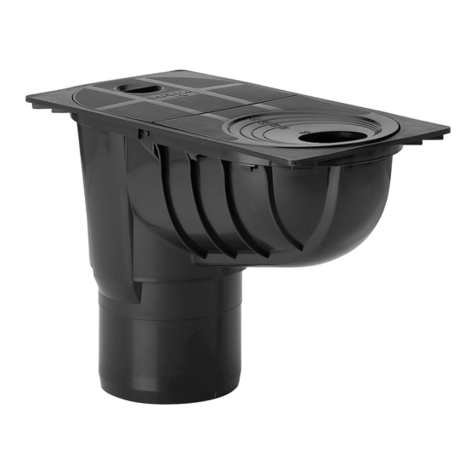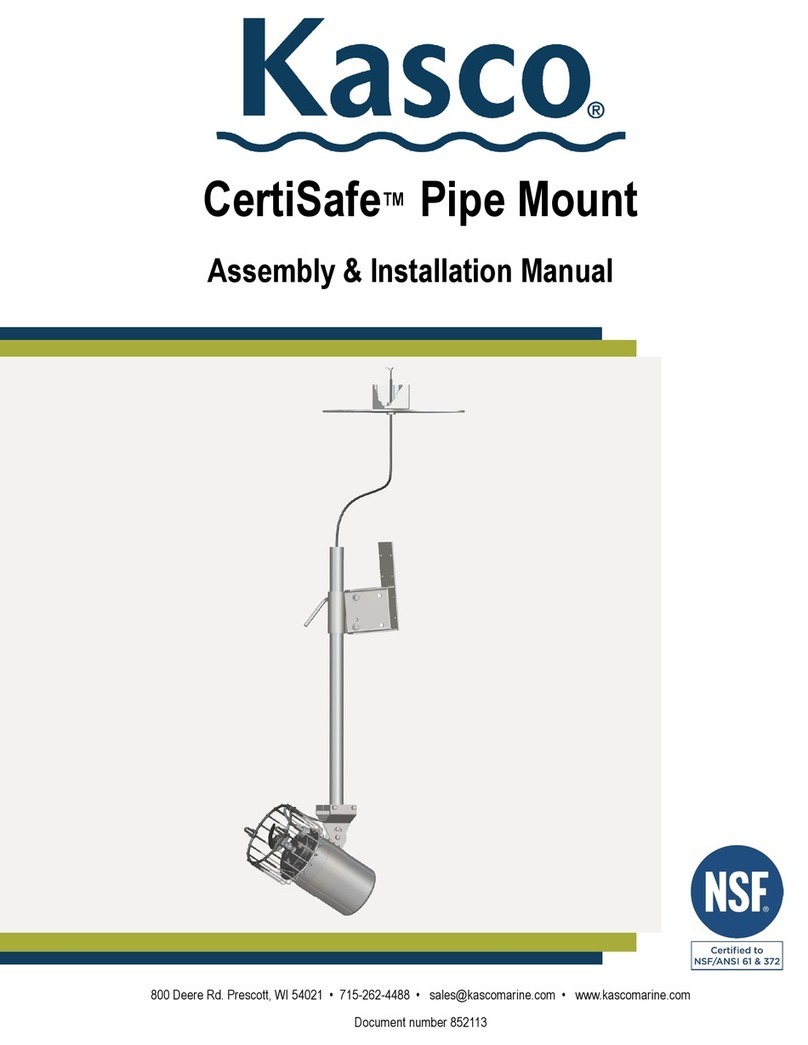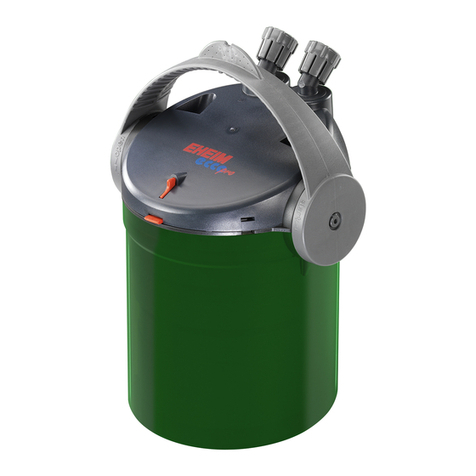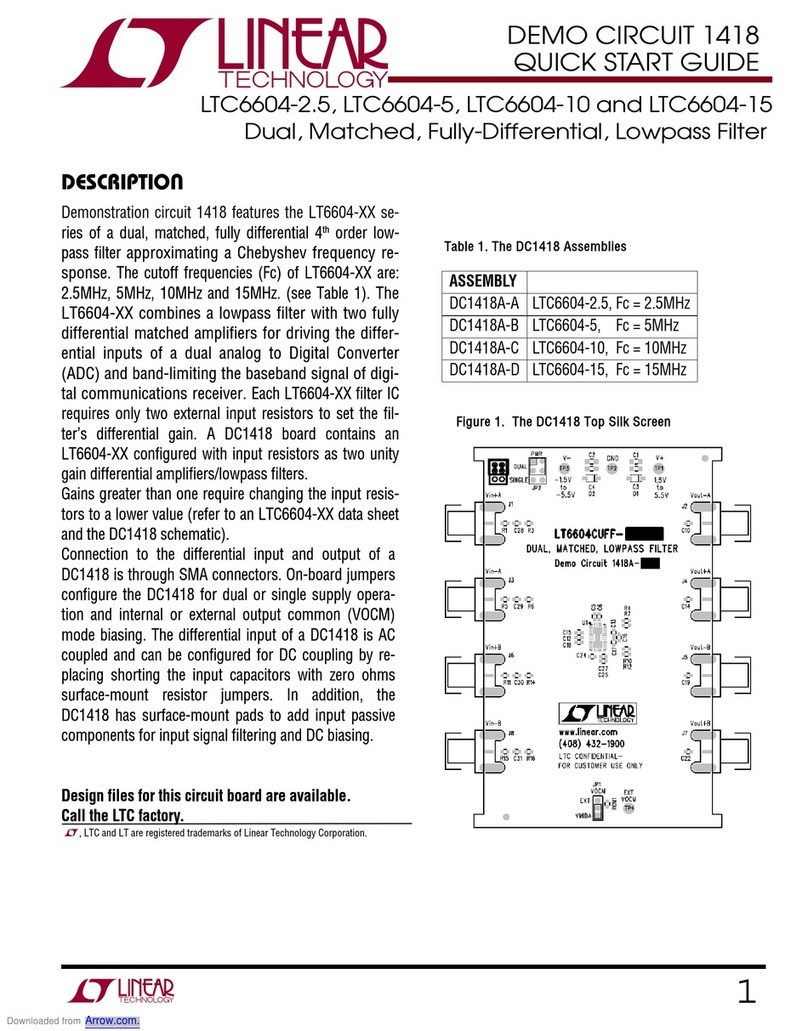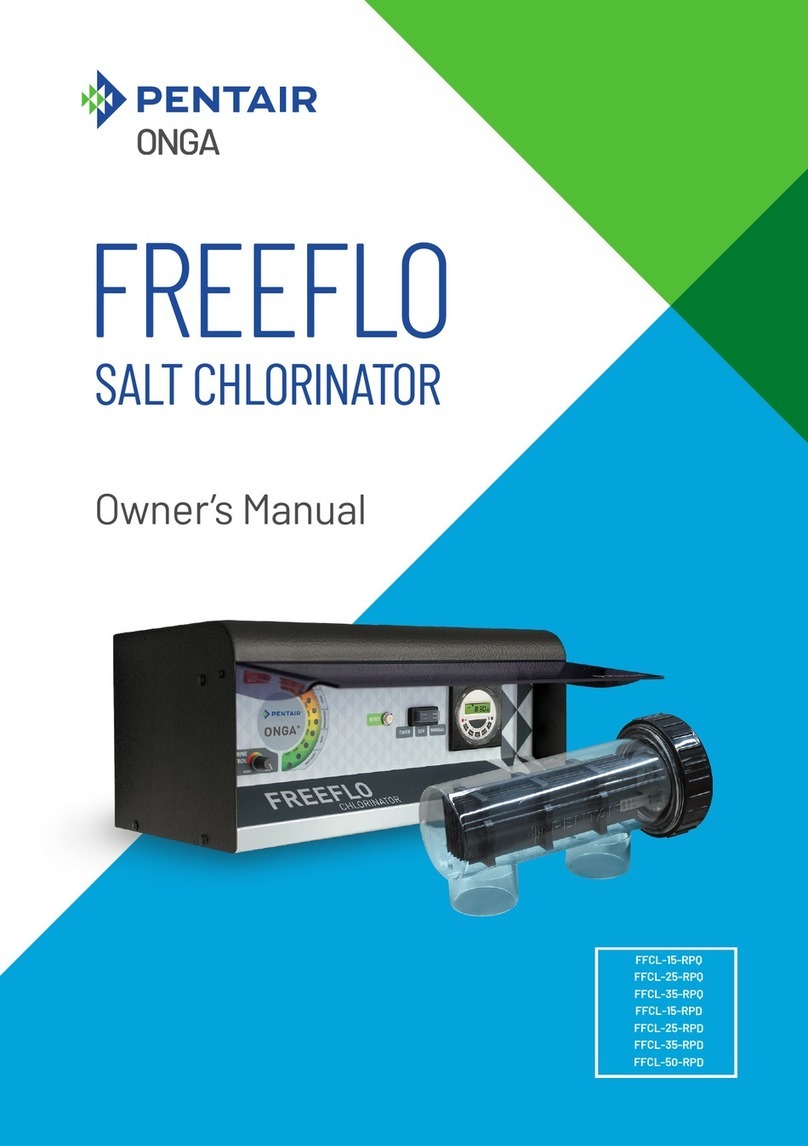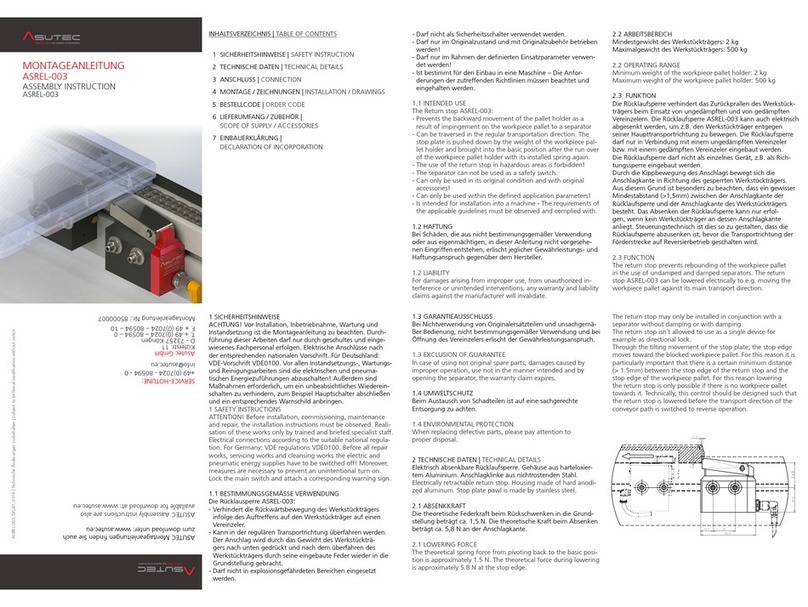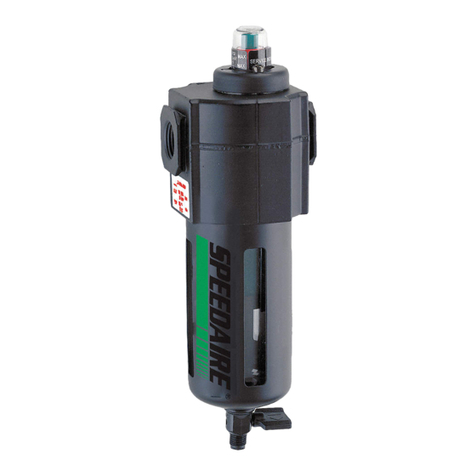Nobel RO 809 /E User manual

rev. 0 ro809-812-815_mi-r0.doc
REVERSE OSMOSIS RO 809 /E - RO 812 /E -RO 815 /E
INSTRUCTIONS MANUAL
INSTRUCTIONS FOR INSTALLATION
OPERATION & MAINTENANCE
WARNING!
The equipment must be used only for the utilization for which they have been
designed, as shown in the technical documentation.
Read carefully this leaflet until the end before starting any operation.
Proceed strictly according to all directions included in this manual.
Reverse osmosis systems models RO/E are designed to treat raw water supplied from
municipalities or from well.
ANY OTHER APPLICATIONS OF THE EQUIPMENT DIFFERENT THAN THE MENTIONED
ONES IS MADE UNDER THE ONLY RESPONSIBILITY OF THE USER.
For any assistance concerning the installations, maintenance or utilization of the equipment
apply the NOBEL Service Center closest to you or directly :
NOBEL S.r.l. via Monfalcone 8 - 20132 Milano - Italy
tel. +39 02 2827968 fax +39 02 2610839

REVERSE OSMOSIS SYSTEMS RO 809-812-815/E - INSTRUCTIONS MANUAL
s.r.l.Milano - ITALY Page 2 of 25 ro809-812-815_mi-r0.doc - r. 0
INDEX
1. Safety........................................................................................................................................4
1.1. General ...............................................................................................................................4
1.2. How to displace the unit ......................................................................................................4
1.3. Hydraulics ...........................................................................................................................4
1.4. Electrical..............................................................................................................................4
1.5. Directions for storage, delivery, installation.........................................................................4
2. Principles of working.................................................................................................................5
3. Technical characteristics ..........................................................................................................6
3.1. Assumed raw water characteristics.....................................................................................6
3.2. Technical characteristics.....................................................................................................6
4. Installation ................................................................................................................................7
4.1. Room conditions .................................................................................................................7
4.2. How to remove packaging...................................................................................................7
4.3. How to move and lift the unit...............................................................................................7
4.4. Placing ................................................................................................................................7
4.5. Hydraulics connections .......................................................................................................8
4.6. Pneumatic connections .......................................................................................................8
4.7. Electrical wiring connections ...............................................................................................8
5. Control panel ..........................................................................................................................10
5.1. Commands and visualizations ..........................................................................................10
5.2. Logical programmer ..........................................................................................................11
5.2.1. Reports on the display of the programmer ..................................................................13
5.2.2. How to set current time and day...................................................................................13
5.2.3. How to set times and delays ........................................................................................13
5.2.4. How to use the function buttons of the programmer ....................................................14
5.3. Logic of working ................................................................................................................14
5.3.1. Levels ...........................................................................................................................14
5.3.2. External enabling signals .............................................................................................15
5.3.3. Hand-driven working ....................................................................................................15
5.3.4. Flushing........................................................................................................................15
5.3.5. Conductivity..................................................................................................................15
5.3.6. Minimum pressure........................................................................................................15
5.3.7. Working of the pump ....................................................................................................16
5.3.8. Remote alarm...............................................................................................................16
5.3.9. Optional features (available upon request) ..................................................................16
6. Starting-up and adjustments...................................................................................................18
7. Maintenance ...........................................................................................................................20
7.1. Periodical monitoring.........................................................................................................20
7.2. Non-working period ...........................................................................................................20
7.3. How to insert or replace membranes ................................................................................21
7.4. Cleaning of the membranes ..............................................................................................22
7.5. How to adjust the min pressure switch PC........................................................................23
7.6. Disposal ............................................................................................................................23
7.7. Table of chemicals for membranes cleaning.....................................................................24
8. Trouble shooting guide ...........................................................................................................25

REVERSE OSMOSIS SYSTEMS RO 809-812-815/E - INSTRUCTIONS MANUAL
s.r.l.Milano - ITALY Page 3 of 25 ro809-812-815_mi-r0.doc - r. 0
Annex :
•diagram UNIT DRAWING •special instructions filters FPA
•diagram DIMENSIONAL •special instructions flushing solenoid valve
•diagram PLACING •special instructions pilot solenoid valves
•diagram MEMBRANES WASHING •special instructions automatic ball valves
•diagram FRONT OF CONTROL PANEL •special instructions 3-ways valves
•wiring diagrams (4 pages) •special instructions high-pressure pump
•NOBEL running-test certificate •special instructions conductimeter
•components list •special instruction flow meters
•fitting-out table

REVERSE OSMOSIS SYSTEMS RO 809-812-815/E - INSTRUCTIONS MANUAL
s.r.l.Milano - ITALY Page 4 of 25 ro809-812-815_mi-r0.doc - r. 0
1. Safety
1.1. General
The equipment has been designed and constructed according to D.P.R. n° 459 of 24th July
1996 (regulation for accomplishment of Norms 89/392/CEE, 91/368/CEE, 93/44/CEE and
93/68/CEE regarding the unification of States members laws in so far as machines are
concerned).
It has been designed and constructed according to European Norms UNI EN 292-1, UNI EN
292-2, UNI EN 292-2/A1, UNI EN 418, CEI EN 60439-1, CEI EN 60 204-1.
Only authorized and skilled personnel will be allowed to carry out installation, start up as well
as routine and planned maintenance.
1.2. How to displace the unit
Particular care and attention should be put in during moving and displacing of heavy items, in
order to avoid injuries to persons or damage properties. The heavy components must be lifted
and displaced by lifting or hooking them up only by the points and facilities shown on the
attached drawings. It is strictly recommended to use only proper sized and suitable ropes,
chains or hooks (see DIMENSIONS & WEIGHT).
1.3. Hydraulics
All operations must be performed by and/or under direct supervision of skilled and
authorized operators, using proper tools and personal protection devices if required
(CE marked), according to safety regulations for working areas. The operators must
be aware of the hazards and danger of the chemicals used in the process.
In case of leakage of chemicals and/or in case of accident (contact with skin, eyes,
etc.) follow strictly the directions mentioned on the safety bulletins of the chemicals
themselves. Before any operation of taking out pipes or part of hydraulic system, it is
required to release the pressure inside and empty the part of the system.
1.4. Electrical
Before starting any operation on electrical devices, be sure that main power supply is
OFF. All operations must be performed by skilled and authorized operators, using
proper tools and personal protection devices if required (CE marked), according to
safety regulations for working areas.
In case of liquid leakage, switch off the main power supply before operation. Before
the switching ON, be sure all the parts of the system are perfectly dry. Check that the
available electrical power is correct, as shown on technical data
Do not make preliminary wiring connections.
1.5. Directions for storage, delivery, installation
t = ºC
t = ºF
humidity rel.
notes
•closed rooms 5÷40 41÷104 5÷95% without condensate
•open space 5÷40 41÷104 5÷95% without condensate protect from sun-light and rain.
•transport 5÷40 41÷104 5÷95% without condensate protect from sun-light and rain.
•installation 5÷40 41÷104 5÷95% without condensate protect from sun-light and rain.

REVERSE OSMOSIS SYSTEMS RO 809-812-815/E - INSTRUCTIONS MANUAL
s.r.l.Milano - ITALY Page 5 of 25 ro809-812-815_mi-r0.doc - r. 0
2. Principles of working
Osmosis is a natural phenomenon : it is the spontaneous passage of a liquid from a dilute to
a more concentrated solution across a semi-permeable membrane. The driving force of the
solution through the membrane is its osmotic pressure. Osmotic pressure is function of the
concentration of the solution or, in our cases, of the salinity of water.
Reverse Osmosis is the process in which the natural osmotic flow is reversed. Reversal is
effected by the application of pressure, greater than the osmotic pressure, to the concentrated
solution. Fresh water diffuses through the membrane (practically containing only a small
quantities of dissolved salts).
Reverse osmosis process allows the removal of approx. 90÷99 % of dissolved salts and
pollutants, if any. The real % removal depends on the kind of membrane used.
The semi-permeable membrane consists of several layers of special fibers, and can be made
of different type and design (spiral wound, hollow fibber, etc.). The word permeate indicates the
product water, while the word concentrate indicates the flow of water carried to drain, which
contains the dissolved salts removed from the permeate.

REVERSE OSMOSIS SYSTEMS RO 809-812-815/E - INSTRUCTIONS MANUAL
s.r.l.Milano - ITALY Page 6 of 25 ro809-812-815_mi-r0.doc - r. 0
3. Technical characteristics
3.1. Assumed raw water characteristics
•silt density index (SDI) ≤3
•TDS of raw water ppm ≤5000 *
•raw water temperature min÷max ºC (°F) 10÷40 (50÷104)
•raw water pressure min÷max bar (kPa) 1.0÷6.0 (100÷600)
•bacteria nil
•free Chlorine ppm Cl ≤0.1
•iron ppm Fe ≤0.1
•silica ppm SiO2≤10.0
•total hardness: according to the pre-treatment
* max. value : according to the construction material used
3.2. Technical characteristics
RO809 /E RO812 /E RO815 /E
•TDS of treated water * ≤3 % of raw water
•power supply V/ph/Hz 400/3/50
•power kW 15 18.5 22
•working pressure bar (kPa) approx. 16 (1600)
•max. allowable pressure bar (kPa) 22 (2200)
•permeate t= 15 ºC l/h 9.000 ** 12.000 ** 15.000 **
•permeate t= 25 ºC l/h 10.800 ** 14.400 ** 18.000 **
•feed water min-max l/h 14.400÷22.000 19.000÷29.000 24.000÷30.000
•dimensions See dimensional diagram
•weight on service kg 650 750 850
•vessel nº 2 on serial + 1 on parallel working
•membranes 8” nº 9 12 15
•filtering elements nº 7 x 40" 15 x 40" 15 x 40"
* TDS of product water, as shown, depends on the chemical-physical characteristics of raw
water.
** treated water quantities, (permeate), as shown, depend on the raw water temperature (feed
water) and strictly depends on its chemical-physical characteristics.

REVERSE OSMOSIS SYSTEMS RO 809-812-815/E - INSTRUCTIONS MANUAL
s.r.l.Milano - ITALY Page 7 of 25 ro809-812-815_mi-r0.doc - r. 0
4. Installation
4.1. Room conditions
These units do not include visible moving or specially noising parts (see also the "noise
monitor chart" attached to the special instructions of high-pressure pump). There are not any
points which reaches high temperature.
4.2. How to remove packaging
The packaging consist of a wooden crate which contains the reverse osmosis system, skid-
mounted.
Open the wooden crate removing, first, the cover and, then, the sides. Keep the cards and
everything contained inside the packaging.
4.3. How to move and lift the unit
Some of the pipes of the plant are made in
plastic material, hence they can be easily
damaged. Do not lift and/or move the unit by
any part of the plant.
Use only fork-lift or other suitable equipment,
checking to warrant correct balance and
stability during the movement.
Insert the forks on the front of the skid as
shown on sketch.
4.4. Placing
Place the unit on a perfectly flat surface.
Follow the directions of the dimensional drawing for the correct placing of the unit, according
to the dimensions of the available room and the required room for service and maintenance.
Not any anti-vibration devices is required, hence the unit can be directly placed on floor.

REVERSE OSMOSIS SYSTEMS RO 809-812-815/E - INSTRUCTIONS MANUAL
s.r.l.Milano - ITALY Page 8 of 25 ro809-812-815_mi-r0.doc - r. 0
4.5. Hydraulics connections see DIAGRAM OF THE SYSTEM and
DIMENSIONS DIAGRAM
•Connect the raw water line (I) to the filter (F), using pipes made in PVC or other suitable
materials, with size (Ø) equal or larger than the size of inlet connection (I).
•Whether the raw water contains a large quantity of suspended solids, the filters (filtration 5
µm) could be clogged very quickly; in this case a proper pre-filter with filtration of 50 µm,
should be provided. According to the characteristics of raw water, the pre-treatment could
be required; apply Nobel technical staff for proper suggestion.
•Run the line from the product water outlet fitting (U) to the storage tank, using pipes made
in PVC or other suitable materials, with size (Ø) equal or larger than the size of outlet
connection (U).
•Run the line from the drain fitting (S) to a floor drain of a proper size, using pipes made in
PVC or other suitable materials, with size (Ø) equal or larger than the size of concentrate
connection (S).
•The pre-arranged fittings for cleaning (R and R1) will be connected, only when required, to
the cleaning tank and/or to the drain. Indeed, it allows the recirculation (or the drain) of
permeate and concentrate during these operation.
FOR SYSTEMS ARRANGED FOR FLUSHING WITH RO PROCESSED WATER ONLY :
•Connect the intake of RO processed water for flushing to the inlet fitting (IF) using pipes
made in PVC or other suitable materials, with size (Ø) equal or larger than the size of the
fitting (IF).
THE OUTLET PRODUCT WATER LINE MUST BE COMPLETELY FREE OF
ANY SHRINKAGE - THROTTLING - SHUT OFF VALVE
4.6. Pneumatic connections
•connect the pilot air fitting (A) placed on the solenoid valves group to a service air supply
line, equipped with pressure reducer, dehumidifier filter, shut-off valve.
The air must be dry, oil-free and with pressure between 5 and 7 bar.
4.7. Electrical wiring connections
Run the electrical wiring connections to the terminal board of the control panel (QE), as
below explained. All the connections between control panel and to the equipment mounted on
the skid, have been already made in factory (see WIRING DIAGRAM).
•The power supply plant must be made according to the value of voltage, frequency and
adsorption, as stated at paragraph “TECHNICAL CHARACTERISTICS”.
•The size of the wires of the electrical power conductors must be selected according to the
max allowable current intensity.
•The power supply line must be protected by an automatic differential circuit breaker, with
adequate power and according to applicable law.
•It is recommended to use suitable fittings, for the wiring connection, in order not to modify
the protection grade of the control board.

REVERSE OSMOSIS SYSTEMS RO 809-812-815/E - INSTRUCTIONS MANUAL
s.r.l.Milano - ITALY Page 9 of 25 ro809-812-815_mi-r0.doc - r. 0
o RL o power supply 400V, 50 Hz (upon request 440 V, 60 Hz)
o SL o " " " " " " " "
o TL o " " " " " " " "
o NL o " " " " " " " "
ooGND
o U o high pressure pump P
o V o " " " "
o W o " " " "
ooGND
o - o Power supply to permeate flow sensor
o + o “ “ “ “ “
ooGND
o - o Power supply to concentrate flow sensor
o + o “ “ “ “ “
ooGND
o + o minimum pressure switch PC
o 7 o “ “ “ “
ooGND
o 4 o conductivity probe CC
o 5 o " " "
ooGND
o9o
micro-switch timer NO (connect on serial if more than 1, make a jumper if not present)
o 10 o " " " " " " " " "
o 9 o common to the levels LL - LH
o 11 o medium level LL (open without water)
o 12 o max. level LH (open without water)
o - o pilot solenoid valve EI of the inlet valve VI
o 17 o " " " " " " " "
ooGND
o - o flushing solenoid valve EF (+ pilot solenoid valve EIF, if installed)
o 18 o " " " " " " " " "
ooGND
o 20 o free-voltage contact for remote alarm (C)
o 21 o " " " " " (NC)
o 22 o " " " " " (NA)
Whether only one ON-OFF level wire connection is available, connect it between the terminals
12 and 9 of the max level (the contact is open when there is no water, its closing stops the RO
high-pressure pump); leave the terminal 11 of the medium level free of any connection.
Whether more than one micro-switch is available (for example for interface with filter and
softener), their NO contacts must be connected on serial.
At the shipment, the terminals of micro-switches are connected by a jumper. The jumper
must be removed when the connections of micro-switches are used.

REVERSE OSMOSIS SYSTEMS RO 809-812-815/E - INSTRUCTIONS MANUAL
s.r.l.Milano - ITALY Page 10 of 25 ro809-812-815_mi-r0.doc - r. 0
5. Control panel
The control panel QE, handled by a logical programmer, controls the automatic and/or
manual working of the whole system.
For safety sake, when the high pressure pump P is on working, the inlet valve VI is open
(except during the flushing with RO processed water, during which the valve VIF is open), both
automatic and manual working as well. Hence, in this manual, any time the working of the high
pressure pump P is mentioned, it is understood that the inlet valve VI is open,
The starting of the pump is some seconds delayed than the opening of the valve VI.
5.1. Commands and visualizations (see diagram FRONT OF CONTROL PANEL)
The instruments available on the control panel are :
CONDUCTIVITY-METER the instrument continuously shows the conductivity of the treated
water (permeate).
When the conductivity of treated water overpasses the set-point value
(set-point K2), the high conductivity alarm is switched on.
LOGICAL
PROGRAMMER LOGO
the programmer that handles the logical working of the unit.
Its display shows the status of the inputs and outputs and allows to
modify the pre-set time of the used timers (see special chapter for
details).
The commands available on the front of control panel QE are :
"EMERGENCY STOP " It is placed on the top side of the control panel; pushing the button
any working of the system is blocked. To re-start the system, turn
counter clock-wise the button, for approx. 30º.
SELECTOR "MODE"
“AUT-RESET-MAN”
it controls the working of the system
on “AUT” the RO system supplies water according to the levels mounted inside
the storage tank of permeate. The correct working requires also the
external enabling signal (on terminals 9 and 10, timer or jumper) and
the one of the minimum pressure switch PC
on “MAN” the pump Pworks and valve VI opens, regardless of any enabling
signals
on “RESET” the blocks caused by the alarms are cancelled; the system is not
running.
BUTTON "FLUSHING" It is connected to the working of the flushing solenoid valve EF (and
VIF if installed). When the button is pressed, the valves open; when
the button is released, the valves close.
The synoptical panel shows graphically the installed items; when one of them is activated,
the correspondent led is ON. For the pressure switch, when its led is ON, it means that the
pressure overpasses the adjusted set-point.
For the solenoid valve EF, when its led is ON, it is also understood that the valve VIF, if
installed, is open.

REVERSE OSMOSIS SYSTEMS RO 809-812-815/E - INSTRUCTIONS MANUAL
s.r.l.Milano - ITALY Page 11 of 25 ro809-812-815_mi-r0.doc - r. 0
The visualizations available on the front of control panel QE are :
"SERVICE PUMP" This visualization is always available; the total time of working of
the system (hours) is also visualized.
"NO EXTERNAL
ENABLING SIGNAL"
When this visualization appears, it indicates that the external
signal is enabling the working of the system is missing (clamps 9-
10).
"NO WATER REQUIRED" When this visualization appears, it indicates that there is not any
request of water supplying by level switches.
"MINIMUM PRESSURE
ALARM"
The alarm acts when the inlet water pressure drops below 0.8 bar
(80 kPa), even if the cause of the pressure drop is a defect of the
inlet pilot solenoid valve EI.
The alarm, few seconds delayed, stops the working of the pump P
(if its selector is on "AUT" mode) but does not close the inlet valve
VI. The alarm and its block can be reset by turning the pump
mode selector on "RESET".
The alarm does not act if the selector mode of pump is on "MAN".
"PUMP ALARM" It is ON if the control does not receive the feed-back from pump P
contactor that the pump is ON, when this pump should be ON
(automatic command).
This alarm switches the block of the whole system; the alarm and
its block can be reset by turning the pump mode selector on
"RESET"..
"HIGH CONDUCTIVITY" the alarm is driven by the conductimeter COND when the
conductivity of treated water overpasses the set-point value. The
factory set is approx. 40 µS/cm. The alarm does not stop the
working of the unit.
The above listed alarm are joined in a free voltage contact for remote report.
5.2. Logical programmer
The logical programmer Siemens serie LOGO controls the logical working of the whole
system.
The display of the programmer shows the status of the logical input signals (marked as I), the
status of the logical output signals (marked as Q), current time and date, the several messages
enabled by the programme.
It is also possible to modify the setting of the entered numerical parameters (marked as B).
The numbering of the inputs and outputs is written on several lines, each of them is related
to ten (I1÷I9, I10÷I19 etc.)
By pushing the buttons or the display shows, alternatively, the visualizations of the
service : current time and date, inputs, outputs, merker (M, to be ignored), function buttons
(ESC+C..)
By pushing the buttons and the messages enabled by the programme are visualized.

REVERSE OSMOSIS SYSTEMS RO 809-812-815/E - INSTRUCTIONS MANUAL
s.r.l.Milano - ITALY Page 12 of 25 ro809-812-815_mi-r0.doc - r. 0
The used functions are the following :
MARK DESCRIPTION
I1 Input for manual flushing
I2 Input of manual start (activated = start)
I3 input of minimum pressure switch PC (open without pressure)
I4 input of the enabling external signal (activated = start)
I5 input for medium level of water tank (open without water)
I6 input for maximum level of water tank (open without water)
I7 input high conductivity alarm (activated = alarm)
I8 Input of the pump working signal
Q1 output for the inlet pilot solenoid valve EI
Q2 output for the pump P
Q3 output for the flushing solenoid valve EF
Q4 output for the alarms joined signal (remote alarm)
Factory
settings
B1 time of flushing post-service 15 s (60 s)
B2 delay of pump starting after inlet valve opening 5 s (5 s)
B3-TH time between two flushings during the service 50 m (50 m)
B3-TL time of flushing during the service 8 s (20 s)
B4 delay for minimum pressure alarm 8 s (8 s)
NOTE : values between brackets are the settings for systems arranged for flushing using RO
processed water.
All adjustment of automatic programmer are factory set, before shipment.
See the following chapters, for any modifications.

REVERSE OSMOSIS SYSTEMS RO 809-812-815/E - INSTRUCTIONS MANUAL
s.r.l.Milano - ITALY Page 13 of 25 ro809-812-815_mi-r0.doc - r. 0
5.2.1. Reports on the display of the programmer
The report messages enabled by the programmer are visualized on the display one at a time,
with a determinate priority.
The buttons and are used to scroll the messages.
The button is used to turn back to service visualizations.
5.2.2. How to set current time and day
The programmer is equipped with internal clock, keeping exact time for 80 hours in case of
power failure.
To set the current time and day, proceed as follows :
1. push the button ESC
2. push the button until the pointer >indicates "Set Clock"
3. push the button OK
4. push the button to point the day or the number to be modified
5. when the pointer blinks on the day or the number to be modified, push the buttonor
until the new desired day or value is shown (symbols related to days of week are
explained at following chapter)
6. repeat the same operation with other values, if required
7. push the button OK to confirm (save) the modifications
8. push the button ESC to go back to the visualization of service.
5.2.3. How to set times and delays
Proceed as follows, to make any modification :
1. push the button ESC
2. push the button until the pointer > indicates "Set param"
3. push the button OK
4. push several times the button until the parameter to be modified is visualized (B1 or
other)
5. push the button OK
6. push the button to point the the number to be modified
7. when the pointer blinks on the day or the number to be modified, push the button
until the new desired day or value is shown
8. repeat the same operation with other values, if required
9. push the button OK to confirm (save) the modifications
10. proceed with other modifications for other parameters or push the button ESC to quit the
modification menu.
11. push the button ESC to go back to the visualization of service
NOTES : •during modification operations the normal current service is NOT interrupted.
•In modifications menu, related to timer, the digits visualized on the line
(marked as Ta) underneath the one on the time settings, marked as T, (TH
and TL for alternation timers) indicate the status of the running counting of the
time of the selected timer.
•the time base are : s = seconds (00,00 ÷ 99,95)
m = minutes (00:00 ÷ 99m:59s)
h = hours (00:00 ÷ 99h:59m)

REVERSE OSMOSIS SYSTEMS RO 809-812-815/E - INSTRUCTIONS MANUAL
s.r.l.Milano - ITALY Page 14 of 25 ro809-812-815_mi-r0.doc - r. 0
5.2.4. How to use the function buttons of the programmer
The 4 buttons can have special functions if enabled by the programmer for these
purposes.
Proceed as follows to use them:
•push several times the button until the notice ESC+C…is visualized on the display.
•push and keep pushed the button ESC and immediately after that the desired function
button ()
WARNING : by pushing the button ESC and not the function button within 2 seconds, the
display skips to the visualization of modification menu; release and then push
again the button ESC to go back to visualization ESC+C…
5.3. Logic of working
5.3.1. Levels
Whether level switches are installed on the storage tank and are connected to the control
board, as previously mentioned, the stop and starting of the high pressure pump Pis
automatically controlled by the medium-maximum level switches.
Whether only one level switch ON-OFF is available, it is connected as a max level (LH); it
means that the closing of the contact stops the pump P.
It is allowed to manually force the start of water supplying, even if the level mark is not
below the threshold LL, by pushing the function button of the programmer.
Proceed as follows to use the function buttons (see also the chapter “ How to use the
function buttons of the programmer”)
•push several times the button until the notice ESC+C…is visualized on the display.
•push and keep pushed the button ESC and immediately after that the desired function
button ()
WARNING •by pushing the button ESC and not the function button within 2 seconds,
the display skips to the visualization of modification menu scelta; release
and then push again the button ESC to go back to visualization ESC+C…
The water supplying will automatically stop when the water reached the max level LH.
In order to stop the working of the pump before that the level is reached, featuring the
flushing, push the function button same way as per above description.
In order to stop the working of the pump before that the level is reached, but not featuring the
flushing, turn temporarly the mode selector on “RESET” position.
The visualization of "NO WATER REQUEST” on the display of the programmer
indicates that there is not request of water supplying by level switches.
The sequence of automatic start-stop of the water supplying, driven by level switches, is the
following :
•water supplying request
•opening inlet valve VI
•wait …(factory set 5 seconds)
•start working of pump P
•water supplying …..stop water supplying request
•closing of valve VI (only if valve VIF is installed)
•opening flushing valves EF (and VIF, if installed) for the pre-se time
•switching off P, closing VI, EF (and VIF, if installed)

REVERSE OSMOSIS SYSTEMS RO 809-812-815/E - INSTRUCTIONS MANUAL
s.r.l.Milano - ITALY Page 15 of 25 ro809-812-815_mi-r0.doc - r. 0
5.3.2. External enabling signals
Whether automatic filters or softeners are installed upstream of RO system, the regeneration
of these units must stop the working of the pump of RO system.
The contacts of the microswitch of programmers of Nobel filters and softeners is closed only
during the service; hence only during the service of filters and softeners the RO system can
work and supply water.
The visualization of notice “NO external enabling signal” indicates that there is not any
enabling signal.
The same notice appears also when the selector mode is on "MAN" position.
5.3.3. Hand-driven working
The system can also works out of the automatic commands of level, timer and pressure
switch, as hand-driven controlled. Just turn the selector on "MAN" position to work out of
automatic control.
5.3.4. Flushing
The feature of flushing is available; It allows to purge the membranes, by flushing high flow
rate water. This feature runs automatically according to pre-set time schedule, during the
current working of the pump P, by automatically opening the special solenoid valve EF.
Also, the flushing features automatically every time the treated water inside the storage tank
reaches the max. level, at the end of water supplying phase (end-cycle flushing). The times of
the flushing features (during and at the end of working) are both adjustable, separately, by the
programmer as described above.
The solenoid valve EF can be also hand-driven opened, at any moment, by just pushing the
button "FLUSHING", available on the front of the control panel.
NOTE: The end-cycle flushing does not feature if the stop of working is not caused by the
maximum level signal (but, for example turning the selector mode on "RESET").
5.3.5. Conductivity
Water conductivity is rough related to its salinity. Since conductivity value is easily
measurable, it is normally used to gives an indication, even if approximate, of the efficiency of
the system.
The conductimeter COND, on the front of the control panel, continuously meters and
visualizes the conductivity of treated water (permeate).
When the conductivity of treated water is higher than the set-point, the alarm "high
conductivity" acts. The factory set point is 40 µS/cm , and it is adjustable by the screw placed
side of the K1 set-point button.
The alarm of high conductivity water has not any influence on working of the system.
5.3.6. Minimum pressure
A pressure switch PC is installed upstream of the high pressure pump P.
It acts when the pressure of the water in that point is less than 0.8 bar (80 kPa). It can be
also caused by non-opening of the inlet valve VI. It drives the low-pressure alarm, few seconds
delayed, and stops the working of the high pressure pump P; the inlet valve VI, instead, remains
open.
The alarm and the block can be re-set only turning, even momentarily, the mode
selector on " RESET".

REVERSE OSMOSIS SYSTEMS RO 809-812-815/E - INSTRUCTIONS MANUAL
s.r.l.Milano - ITALY Page 16 of 25 ro809-812-815_mi-r0.doc - r. 0
5.3.7. Working of the pump
The control system should receive the feed-back from the contactor of pump P that the pump
is ON, when it should be ON (automatic command).
Otherwise, the alarm acts, 3 seconds delayed, and it also switches the block of the whole
system.
The alarm and its block can be reset only turning, even momentarily, the pump mode
selector on "RESET".
5.3.8. Remote alarm
The mentioned alarms, besides their visualization, also drive a relays with a free voltage
contact for remote alarm (see electrical wiring connections).
5.3.9. Optional features (available upon request)
5.3.9.1.Flushing with RO treated water
The flushing feature runs using RO treated water, instead of raw water.
An inlet line IF is available on the system, complete with a valve (VIF), and to be connected
to the storage tank of RO treated water.
The flushing works the same way of standard system, only using RO treated water, through
the valve VIF, instead of raw water; the valves EF and VIF open and, in the same time, the inlet
valve VI of the raw water is closed. This features works the same way during automatic flushing
and as well as by pushing the button “ FLUSHING”.
5.3.9.2.Automatic flushing during stand-by
This option is available only together with the option “Flushing with RO treated water”.
The selector "FLUSH ST-BY" is available on the front of the control panel; when turned on
“1” position, it starts the automatic sequence of flushing when there is not any supplying of
treated water.
This feature allows to avoid too long still water inside the storage tank and RO membranes,
when treated water is not used (i.e. during week-end or holidays).
The time of phases of flushing and stop (time between two subsequent flushings) are both
adjustable, by the programmer.
The programmer starts the sequence with a phase of stop, when all the following conditions
happen :
-mode selector is on “AUT”
-flushing selector is on “1”
-there is not any request of treated water from the storage tank (level switch
system)
Hence, if the flushing selector is turned on “1”, the first flushing features at the end of phase
of stop, after the filling of the RO treated water storage tank, regardless of the day and time of
day.
If any of the 3 mentioned conditions is missing, the counting of time of both phases is
immediately re-set to zero.
NOTE : •when the flushing during stand-by is featured, most of the water used for it (RO
already treated water, intaken from storage tank) is discharged as concentrated.
•When flushing is featured during service the valves EF and VIF open in the same
time; while the valve EF does not open during stand-by flushing.

REVERSE OSMOSIS SYSTEMS RO 809-812-815/E - INSTRUCTIONS MANUAL
s.r.l.Milano - ITALY Page 17 of 25 ro809-812-815_mi-r0.doc - r. 0
Besides the functions listed at related paragraph (5.2), the following funtions of the
programmer are used :
I9 Input to enable the intermittent flushing during stand-by
I10 Input threshold level of the sensor of the concentrate flow rate (F2)
Q5 Output related to the pilot solenoid valve EIF of the inlet of flushing
standard
settings
B8-TH time between two flushings during stand-by (stop-time) 2 h
B8-TL time of flushing during stand-by 10 m
B9 delay for minimum flow rate flushing alarm 6 s
For safety-sake, when the automatic stand-by flushing feature is installed, the software
improves the control of the opening of the water inlet valve for flushing (VIF).
Since during flushing water is intaken from storage tank at atmospheric pressure and not
from pressurized mains, the pressure switch PC is not suitable to control the water pressure
during flushing.
Therefore, the function of threshold control of the flowmeter F2 (concentrate) is used for this
purpose; entering a pre-set threshold value (approx 20 % of the concentrate flow rate during
normal service), the system reveals, within a max pre-set time (6”), if this minimum flow rate is
not reached.
This situation can be caused by the lacking of water or by the non-opening of the valve VIF,
flushing water inlet.
The consequent alarm blocks the featuring of the flushing and inhibits the following ones; the
alarm and related block can be re-set only by turning the mode selector on “RESET".
The alarm does not affect normal service
During the normal service the alarm does not act.
The alarm is visualized on the display as follows :
"ALLARME MIN
PRESS FLUSS"
"ALARM MIN
FLUSH PRESSURE"
This alarm is joined together with others for remote report.

REVERSE OSMOSIS SYSTEMS RO 809-812-815/E - INSTRUCTIONS MANUAL
s.r.l.Milano - ITALY Page 18 of 25 ro809-812-815_mi-r0.doc - r. 0
6. Starting-up and adjustments
At the starting-up of the system, when the system is re-started after a long non-working
period, and after a cleaning operation, the membranes are filled with preservative or detergent
chemical.
Hence, in any cases, it is required to remove completely the preservative or detergent from
the membranes before that treated water can be used.
The operations are made as follows : (see "DIAGRAM OF THE SYSTEM")
•be sure that the power switch of power control panel QE is OFF (main switch on “0”)
•connect temporarily the auxiliary fitting R to the drain
•divert, temporarily also the permeate line to the
drain, by turning the 3-way valve V3 on cleaning
position, (the direction of the flow towards the fitting
R, check the direction with the symbol marked on the
lever of 3-ways valves).
•close completely the needle regulation valve VR
•open completely the needle regulation valve VS
•open slowly the water inlet valve of the system. In order to make easy the filling of the
filter F, open slowly the valve placed on the top side of the filter
•switch ON the main power of QE control board (turning on "1" position), and switch the
mode selector of the pump on "MAN" position; the RO unit will start to work.
•after several minutes of working (check carefully that there is required minimum
pressure of water inlet, by the pressure gauges M1 and M2: the minimum pressure
control is out of working when the mode selector is on “MAN” position), the service
flow rates can be checked and adjusted.
•adjust the needle valve VS, mounted along the the drain line of the membranes, in order
that the flow rate of permeate (flow meter F1) meets the technical data of the system. The
value of pressure shown on pressure gauge M4, after the adjustment of VS valve, is the
normal working pressure of the system according to the available raw water quality
(chemical composition, temperature, etc.)
An adjustable recirculating system is available in order to reduce the quantity of
concentrated (drain) water and/or reduce the working pressure; proceed as follows :
•adjust the needle valve VR to recirculate part of concentrated water in order to reduce the
flow rate of water actually carried to drain. The adjustment of the valve VR causes also
the modification of the working pressure, hence a new adjustment of valve VS is required,
until both values pressure/flow rate are the ones desired.
•The valve VRP, mounted downstream of the pump P, allows to throttle the forcing line of
the pump, in order to allow to reduce both the pressure and the flow rate on membranes.
This feature can be useful for the system to run at low pressure, without recirculationg or
draining a too high flow of water.
A “too high flow” means the one that causes a pressure drop, across the membranes,
over than 3 bars (300 kPa) for each housing (difference of pressure between M3-M5 and
M5-M4).
This needing happens more often with new membranes, when they produce the max flow.

REVERSE OSMOSIS SYSTEMS RO 809-812-815/E - INSTRUCTIONS MANUAL
s.r.l.Milano - ITALY Page 19 of 25 ro809-812-815_mi-r0.doc - r. 0
CAUTION: The treated water (permeate) supplied during the first hour of working of the
system must not be used, since it can still contain residual of preservative
chemical. When this solution will be completely flushed away, the valve V3
can be turned on normal working position (the permeate flow is diverted to
the storage tank).
NOTE :
The best ratio treated water/drain water (permeate/concentrated) can be decided
according to the characteristics of raw water.
The higher is the value of the ratio, the higher is the risk of membrane fouling, furthermore
if the hardness of raw water is high.
However, even if the raw water is soft (naturally or processed by a softener), it is
recommended that the above concentration ratio should not be higher than 1 (permeate =
concentrated)
NOTE :
Normally, the longest life of the membrane depends on the lowest working pressure, with
same other operating conditions. Therefore, should the quantity of treated water
(permeate) is satisfactory, the system can work at a working pressure lower than the
stated one.

REVERSE OSMOSIS SYSTEMS RO 809-812-815/E - INSTRUCTIONS MANUAL
s.r.l.Milano - ITALY Page 20 of 25 ro809-812-815_mi-r0.doc - r. 0
7. Maintenance
Refer to special manuals of each components for maintenance operations.
7.1. Periodical monitoring
The system requires, as periodical maintenance, the cleaning or replacing of the cartridge of
filters .
Special instructions :
•check daily the values of pressure and flow rate of the water; they have to comply with
ones stated by the manufacturer.
•be sure of chlorine content in raw water : it is STRICTLY required that the contents of
chlorine in raw water must be lower than 0.1 ppm; higher quantity can seriously damage
the membrane.
•replace the 5 µm filtering cartridges of the filter F, at least every six months, according to
the quality of raw water or when the inlet pressure decreases (compare pressure gauges
M1 and M2, max allowable pressure drop though the filter is 0.8 bar - 80 kPa). Before the
opening of the filter, switch OFF the main power, and close the inlet shut off ball valve V1;
for refills see the attached special instructions of the filters.
•replace the RO membranes, when the quality and/or quantity of treated water (permeate)
are not satisfactory any more. Whether the raw water is adequately pre-treated the life of
membranes is usually longer than 3 years (even 5-6 years). Therefore, the life of
membranes depends on the quality of water to be processed.
To re-start the system after the replacement of filters and/or membranes, follow the
directions described at chapter "Starting-up and adjustments”.
7.2. Non-working period
•Whether a non-working period, longer than one week is expected, it is suggested to fill the
membranes with a preservative solution containing 1% of sodium bisulphite (NaHSO3) in
water treated by RO system.
The preservative is injected into the membranes using an auxiliary tank, the same way
described for the cleaning, but without rinse. The solution is simply drawn by the high-
pressure pump P.
At the re-starting of the system it is required to remove the preservative from
the membranes, the same way described at chapter “Starting-up &
adjustment".
This manual suits for next models
2
Table of contents
Other Nobel Water Filtration System manuals
Popular Water Filtration System manuals by other brands
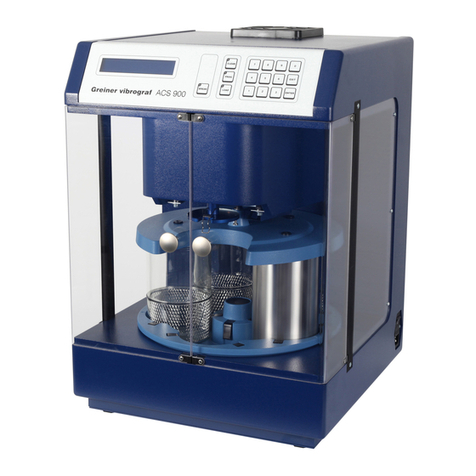
Greiner Vibrograf
Greiner Vibrograf ACS 900 Manual and instruction

Pool Technologie
Pool Technologie JUSTSALT UNO user manual
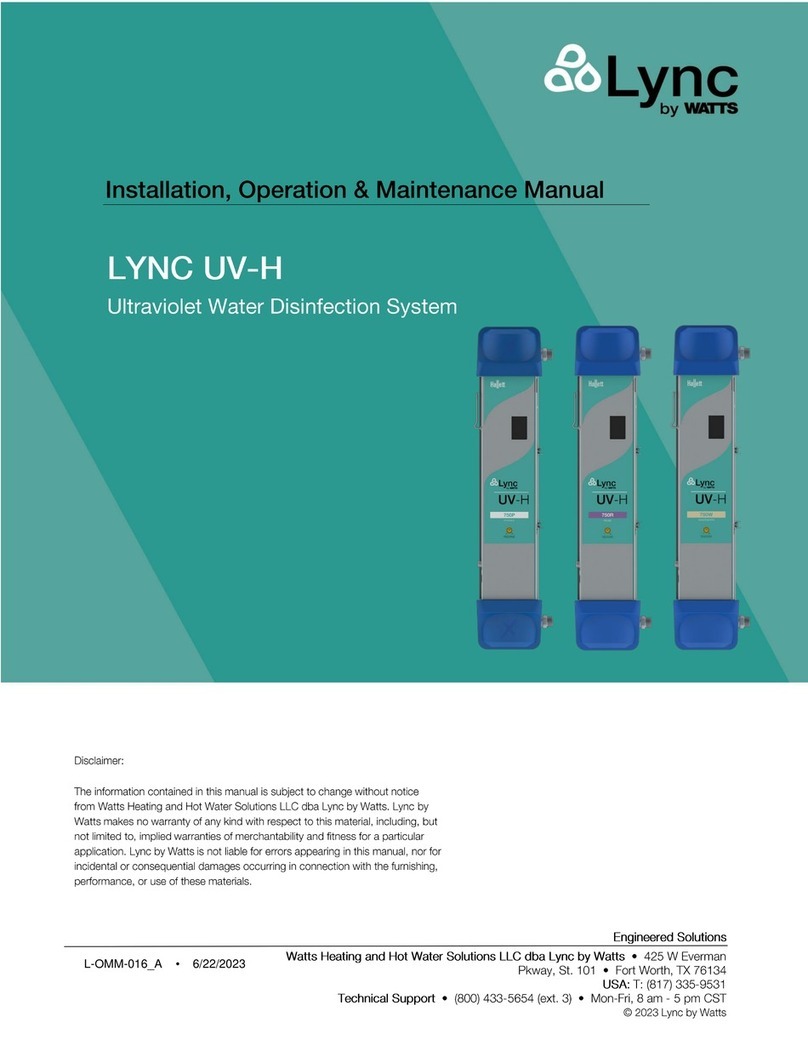
Watts
Watts LYNC UV-H Installation, operation & maintenance manual
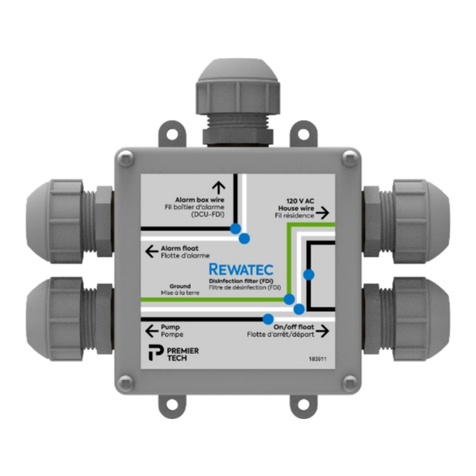
PREMIER TECH
PREMIER TECH ECOFLO owner's manual

EHEIM
EHEIM professionel4+ operating instructions
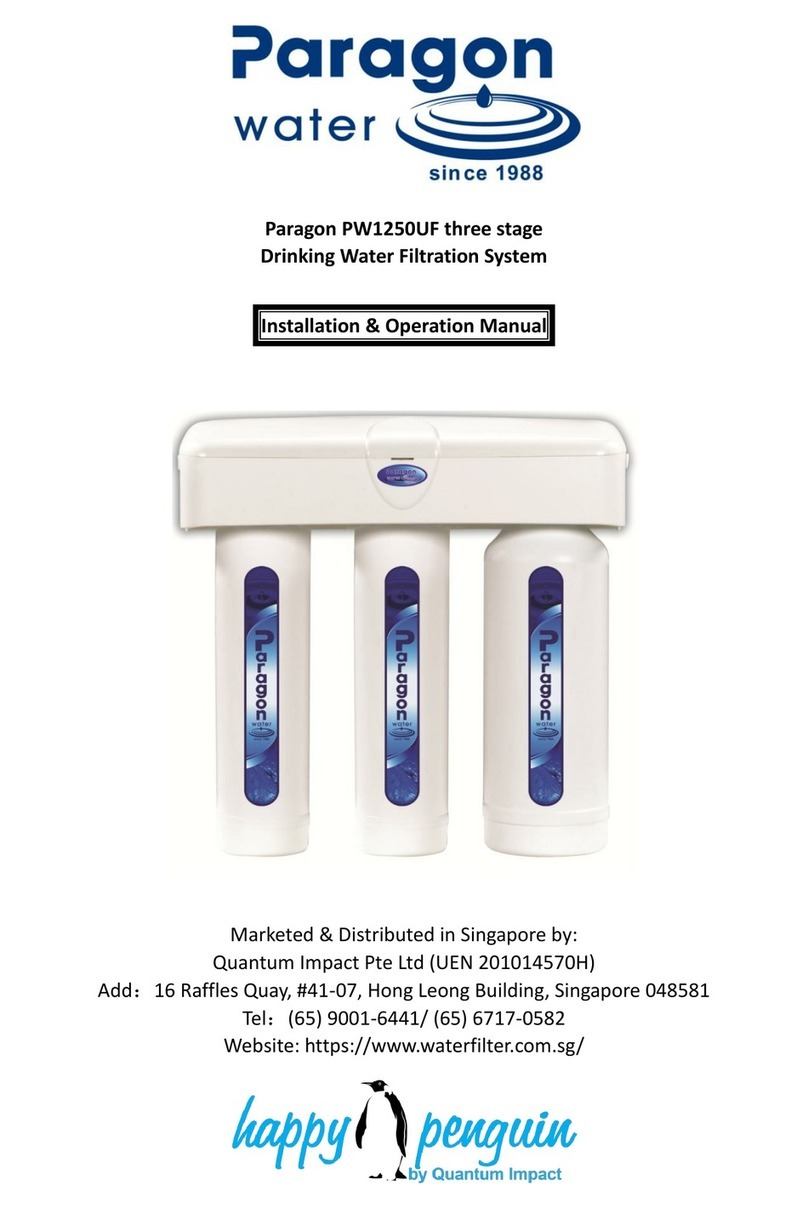
Paragon
Paragon PW1250UF Installation & operation manual
